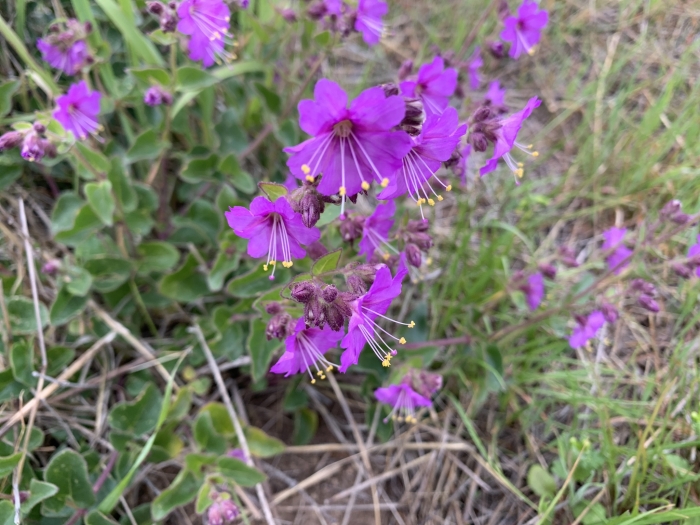Desert Wishbone-Bush
(Mirabilis laevis)
Desert Wishbone-Bush (Mirabilis laevis)
/
/

gnyquist
Public Domain
Image By:
gnyquist
Recorded By:
Copyright:
Public Domain
Copyright Notice:
Photo by: gnyquist | License Type: Public Domain | License URL: http://creativecommons.org/publicdomain/zero/1.0/ | Rights Holder: gnyquist | Publisher: iNaturalist | Date Created: 2021-03-07T15:29:38Z |











































































Estimated Native Range
Summary
Mirabilis laevis, commonly known as Desert Wishbone-bush, is a perennial herb in the four o’clock family. It is native to desert washes, rocky slopes, and open woodlands in the Southwestern United States, California, and Northwest Mexico, including the Mojave and Sonoran Deserts. This species, including the variety formerly known as Mirabilis californica, is adapted to arid environments. Typically, it grows to a height of 1-3 feet (0.3-0.9 meters) with a similar spread, and it features sprawling stems that often form a wishbone shape. The plant is deciduous, losing its leaves during dry conditions to conserve water. Its flowers are trumpet-shaped, pink to magenta in color, and bloom from late afternoon into the evening, primarily from March to June. The flowers are followed by spherical, wrinkled fruits.
Desert Wishbone-bush is valued for its drought tolerance and its ability to thrive in hot, dry climates, making it a suitable choice for xeriscaping and water-wise gardens. It is often used in rock gardens, as a ground cover, or in naturalistic plantings. For best growth, it requires full sun exposure and well-draining soil. While it is low-maintenance, it can benefit from occasional water during prolonged dry spells. There are no major disease or pest issues, but overwatering can lead to root rot. It is also important to note that this plant can reseed prolifically under favorable conditions, which should be managed to prevent unwanted spread.CC BY-SA 4.0
Desert Wishbone-bush is valued for its drought tolerance and its ability to thrive in hot, dry climates, making it a suitable choice for xeriscaping and water-wise gardens. It is often used in rock gardens, as a ground cover, or in naturalistic plantings. For best growth, it requires full sun exposure and well-draining soil. While it is low-maintenance, it can benefit from occasional water during prolonged dry spells. There are no major disease or pest issues, but overwatering can lead to root rot. It is also important to note that this plant can reseed prolifically under favorable conditions, which should be managed to prevent unwanted spread.CC BY-SA 4.0
Plant Description
- Plant Type: Herb, Subshrub
- Height: 1-2 feet
- Width: 6-10 feet
- Growth Rate: Moderate
- Flower Color: Purple, White
- Flowering Season: Spring, Winter
- Leaf Retention: Evergreen
Growth Requirements
- Sun: Full Sun
- Water: Low
- Drainage: Fast
Common Uses
Bee Garden, Bird Garden, Butterfly Garden, Deer Resistant, Groundcover, Hummingbird Garden, Low Maintenance, Rabbit Resistant, Showy Flowers
Natural Habitat
native to desert washes, rocky slopes, and open woodlands in the Southwestern United States, California, and Northwest Mexico, including the Mojave and Sonoran Deserts
Other Names
Common Names:
Scientific Names: , Mirabilis laevis, Mirabilis laevis var. laevis, Mirabilis glutinosa, Mirabilis limosa, Hesperonia laevis, Mirabilis laevis subsp. glutinosa, Mirabilis laevis var. glutinosa, Oxybaphus laevis, Hesperonia bigelowii
GBIF Accepted Name: Mirabilis laevis (Benth.) Curran